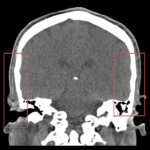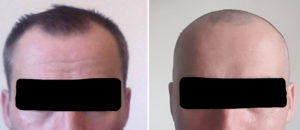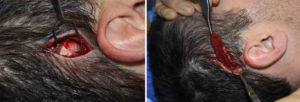Background: An aesthetically displeasing size of the head can occur at various skull areas. One such area is at the side of the head most commonly located above the ears. When it is too wide there is a noticeable convexity or bowing out of the temporal region above the ears. A more aesthetically pleasing shape at the side of the head is more of a straight line or one with a minimal convex shape to it.
Because the temporal region is located on the side of the skull it is logical to assume that it is bone and can only narrowed by bone reduction. But careful analysis of many CT scans reveals the thickness of the posterior temporal region above the ears is about 50:50 bone and muscle. The thickness of the posterior temporal muscle is a lot thicker than most would think. In men it is 7 to 9mm thick while in women it can be 5mm to 7mms thick.
Thus removal of the posterior temporalis muscle offers an effective treatment strategy for narrowing the side of the head. It can also be done with less scar that would be required for temporal bone reduction.



Highlights:
1) The wide side of the head is aesthetically determined by an increased convexity above the ears.
2) An increased head width above the ears is caused by both increased bone thickness and muscle thickness.
3) Head width or temporal reduction is best done by removal of the entire belly of the posterior temporal muscle.
Dr. Barry Eppley
Indianapolis, Indiana



